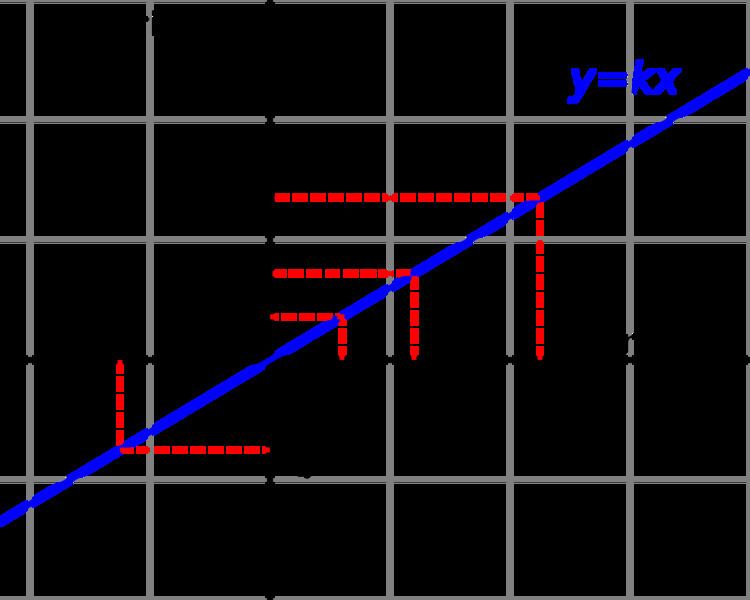 | ||
In mathematics, two variables are proportional if a change in one is always accompanied by a change in the other, and if the changes are always related by use of a constant multiplier. The constant is called the coefficient of proportionality or proportionality constant.
Contents
- Direct proportionality
- Examples
- Properties
- Inverse proportionality
- Hyperbolic coordinates
- Exponential and logarithmic proportionality
- References
To express the statement "y is directly proportional to x" mathematically, we write an equation y = cx, where c is the proportionality constant. Symbolically, this is written as y ∝ x.
To express the statement "y is inversely proportional to x" mathematically, we write an equation y = c/x. We can equivalently write "y is directly proportional to 1/x".
An equality of two ratios is called a proportion. For example, a/c = b/d, where no term is zero.
Direct proportionality
Given two variables x and y, y is directly proportional to x if there is a non-zero constant k such that
The relation is often denoted, using the ∝ or ~ symbol, as
and the constant ratio
is called the proportionality constant, constant of variation or constant of proportionality.
Examples
Properties
Since
is equivalent to
it follows that if y is directly proportional to x, with (nonzero) proportionality constant k, then x is also directly proportional to y with proportionality constant 1/k.
If y is directly proportional to x, then the graph of y as a function of x is a straight line passing through the origin with the slope of the line equal to the constant of proportionality: it corresponds to linear growth.
Inverse proportionality
The concept of inverse proportionality can be contrasted against direct proportionality. Consider two variables said to be "inversely proportional" to each other. If all other variables are held constant, the magnitude or absolute value of one inversely proportional variable decreases if the other variable increases, while their product (the constant of proportionality k) is always the same.
Formally, two variables are inversely proportional (also called varying inversely, in inverse variation, in inverse proportion, in reciprocal proportion) if each of the variables is directly proportional to the multiplicative inverse (reciprocal) of the other, or equivalently if their product is a constant. It follows that the variable y is inversely proportional to the variable x if there exists a non-zero constant k such that
The constant can be found by multiplying the original x variable and the original y variable.
As an example, the time taken for a journey is inversely proportional to the speed of travel; the time needed to dig a hole is (approximately) inversely proportional to the number of people digging.
The graph of two variables varying inversely on the Cartesian coordinate plane is a rectangular hyperbola. The product of the x and y values of each point on the curve equals the constant of proportionality (k). Since neither x nor y can equal zero (because k is non-zero), the graph never crosses either axis.
Hyperbolic coordinates
The concepts of direct and inverse proportion lead to the location of points in the Cartesian plane by hyperbolic coordinates; the two coordinates correspond to the constant of direct proportionality that locates a point on a ray and the constant of inverse proportionality that locates a point on a hyperbola.
Exponential and logarithmic proportionality
A variable y is exponentially proportional to a variable x, if y is directly proportional to the exponential function of x, that is if there exist non-zero constants k and a such that
Likewise, a variable y is logarithmically proportional to a variable x, if y is directly proportional to the logarithm of x, that is if there exist non-zero constants k and a such that
